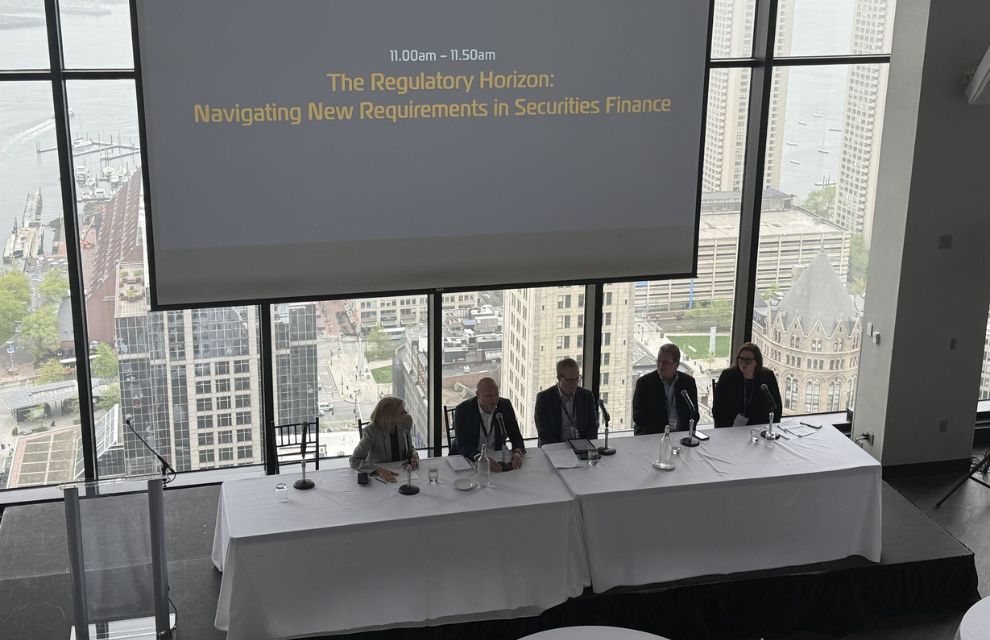SFS: The regulatory horizon for securities finance
09 May 2025 US
 Image: Justin Lawson
Image: Justin Lawson
In a relaxed discussion, moderator Ranada Fergerson, managing director and senior counsel, Global Securities Lending at Brown Brothers Harriman, made it clear there would be one main topic of discussion dominating conversation — the US Securities and Exchange Commission’s (SEC’s) 10c-1a rule.
Tom Veneziano, head of North America product at Pirum, suggested the current timeline of January 2026 is tight, especially depending on how far along firms currently are. “It’s going to be a tight timeframe,” he noted, echoing concerns raised by fellow panellists.
Jonathan Lee, senior regulatory reporting specialist at Kaizen, went further: “Firms are never really ready,” he said, noting that getting the industry compliant by January 2026 may even be “pie in the sky”.
That said, Dean Bruyns, executive director at S&P Global Market Intelligence Cappitech, emphasised that most firms are preparing — though with one key caveat: “There’s only so much you can do before the details are confirmed.”
Lee also raised another major concern, warning that it could turn into a bureaucratic exercise, rather than a system that genuinely supports market function.
While Veneziano did highlight some recent amendments to the rule offering relief, he flagged the two major outstanding issues he currently identifies — extraterritoriality and the scope of securities that are reportable. Without clearer guidance from the SEC, he warned, some firms may wrongly consider themselves out of scope.
Given the makeup of the panel, and the audience, the question of who should take responsibility for reporting, was naturally raised.
In Europe, he noted, asset managers want their agent lenders to take responsibility, as with the Securities Financing Transactions Regulation (SFTR); however, in the US, this may not be an option.
Bruyns agreed: “There’s pressure on vendors, but most firms want to retain compliance control themselves.”
With many firms operating globally, the SEC’s reach over international players was another unresolved issue. As Bruyns succinctly put it: “Does the SEC really have power over banks in a faraway place?”
Speaking of the example of T+1 as a driver, Nancy Steiker, senior director, global securities finance product management at FIS, noted “the industry came together and said: ‘this is what we are going to do’.” That kind of collaboration, she said, will be essential again.
There may be other regulatory changes being talked about, but for now at least, the focus remains squarely on 10c-1a.
Tom Veneziano, head of North America product at Pirum, suggested the current timeline of January 2026 is tight, especially depending on how far along firms currently are. “It’s going to be a tight timeframe,” he noted, echoing concerns raised by fellow panellists.
Jonathan Lee, senior regulatory reporting specialist at Kaizen, went further: “Firms are never really ready,” he said, noting that getting the industry compliant by January 2026 may even be “pie in the sky”.
That said, Dean Bruyns, executive director at S&P Global Market Intelligence Cappitech, emphasised that most firms are preparing — though with one key caveat: “There’s only so much you can do before the details are confirmed.”
Lee also raised another major concern, warning that it could turn into a bureaucratic exercise, rather than a system that genuinely supports market function.
While Veneziano did highlight some recent amendments to the rule offering relief, he flagged the two major outstanding issues he currently identifies — extraterritoriality and the scope of securities that are reportable. Without clearer guidance from the SEC, he warned, some firms may wrongly consider themselves out of scope.
Given the makeup of the panel, and the audience, the question of who should take responsibility for reporting, was naturally raised.
In Europe, he noted, asset managers want their agent lenders to take responsibility, as with the Securities Financing Transactions Regulation (SFTR); however, in the US, this may not be an option.
Bruyns agreed: “There’s pressure on vendors, but most firms want to retain compliance control themselves.”
With many firms operating globally, the SEC’s reach over international players was another unresolved issue. As Bruyns succinctly put it: “Does the SEC really have power over banks in a faraway place?”
Speaking of the example of T+1 as a driver, Nancy Steiker, senior director, global securities finance product management at FIS, noted “the industry came together and said: ‘this is what we are going to do’.” That kind of collaboration, she said, will be essential again.
There may be other regulatory changes being talked about, but for now at least, the focus remains squarely on 10c-1a.
NO FEE, NO RISK
100% ON RETURNS If you invest in only one securities finance news source this year, make sure it is your free subscription to Securities Finance Times
100% ON RETURNS If you invest in only one securities finance news source this year, make sure it is your free subscription to Securities Finance Times



